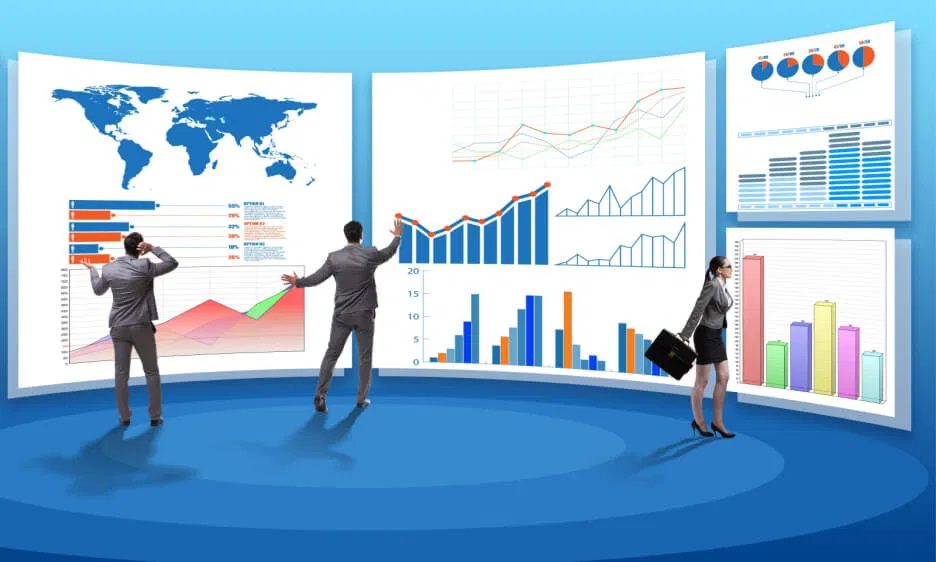In a world overflowing with data, the way we present information matters more than ever. Numbers alone rarely leave a lasting impression, but turn them into a compelling visual story, and suddenly they have impact. Whether you’re pitching to investors, presenting a quarterly report, or explaining market trends, good data visualisation can transform dry statistics into something engaging, persuasive, and easy to understand.
Working with a PowerPoint design company can ensure your visuals are clear, impactful, and tailored to your audience, making complex information more digestible and memorable.
So, why does data visualisation matter so much in presentations? And how can you make sure you’re doing it right? Let’s dive in.
Why Data Visualisation is Essential
1. Making Complex Information Understandable
Let’s face it—most people don’t have the patience to sift through dense spreadsheets or long-winded reports. Well-crafted charts, graphs, and infographics simplify complex data, making it easier for audiences to grasp patterns and key insights quickly. According to research by Geeks for Geeks, visual data is processed 60,000 times faster than text, which means your audience is far more likely to retain what you’re showing them.
2. Keeping Your Audience Engaged
Ever sat through a presentation packed with endless bullet points and blocks of text? Chances are, you checked out pretty quickly. Visual elements capture attention and sustain interest far more effectively. A study by Zoho found that presentations incorporating strong visuals keep audiences engaged for longer and improve information recall.
3. Helping Decision-Makers See the Big Picture
Well-designed visuals highlight trends, outliers, and relationships in data, helping businesses make informed decisions. Whether you’re showing financial growth, customer demographics, or website traffic, a clear data story gives decision-makers the insights they need without getting lost in the numbers.
How to Get Data Visualisation Right
Good visualisation isn’t just about making things look pretty—it’s about making data work for your audience. Here’s how to do it effectively:
1. Understand Your Audience
Before deciding on a visual format, think about who you’re presenting to. Are they data experts who can handle complex charts, or are they executives who need a high-level overview? Tailoring your visualisations to their level of understanding ensures your message lands effectively.
2. Choose the Right Visual for Your Data
Not all visuals are created equal. Picking the wrong one can confuse your audience rather than clarify your point. Here’s a quick guide:
- Line charts – Best for showing trends over time.
- Bar charts – Ideal for comparisons between categories.
- Pie charts – Good for illustrating proportions (but use sparingly).
- Heat maps – Great for identifying patterns and intensity.
- Infographics – Useful when you need a mix of visuals and explanatory text.
Sites like 24Slides stress the importance of aligning the right visual with your specific message.
3. Keep It Simple and Clean
One of the biggest mistakes in data visualisation is overcomplicating things. Cluttered charts with too many colours, labels, and data points overwhelm audiences and obscure key insights. The Royal Statistical Society’s Data Visualisation Guide recommends keeping visuals as simple as possible while maintaining clarity.
4. Use Colour Wisely
Colour can be a powerful tool—but it can also be a distraction. Stick to a consistent colour scheme and use contrast to highlight key takeaways. Be mindful of accessibility too; tools like ColorBrewer can help ensure your visuals are readable for colour-blind viewers.
5. Provide Context with Labels and Annotations
Your audience shouldn’t have to guess what they’re looking at. Clear titles, labels, and annotations help provide context and make your data story easier to follow. If a key takeaway isn’t obvious, spell it out.
6. Test Before Presenting
Before showing your visualisations to a larger audience, test them with colleagues. If they don’t immediately understand your key points, chances are your broader audience won’t either. Make tweaks based on feedback to ensure clarity.
Common Pitfalls to Avoid
Even the best presenters make mistakes when visualising data. Here are a few pitfalls to watch out for:
- Misleading visuals – Manipulating axes or cherry-picking data to create a false impression can damage credibility.
- Overuse of pie charts – They often make comparisons harder to interpret. Bar charts are usually a better choice.
- Too much information on one slide – Avoid information overload. If a visual is too complex, break it down across multiple slides.
- Lack of accessibility considerations – Make sure visuals are readable for all audience members, including those with visual impairments.
Final Thoughts
Data visualisation is a powerful tool, but only when done right. It turns numbers into stories, engages audiences, and helps decision-makers see what really matters. Whether you’re using charts, infographics, or interactive dashboards, following these best practices will ensure your visuals enhance rather than hinder your message.
Next time you prepare a presentation, think beyond the data—think about how you can make it resonate.



